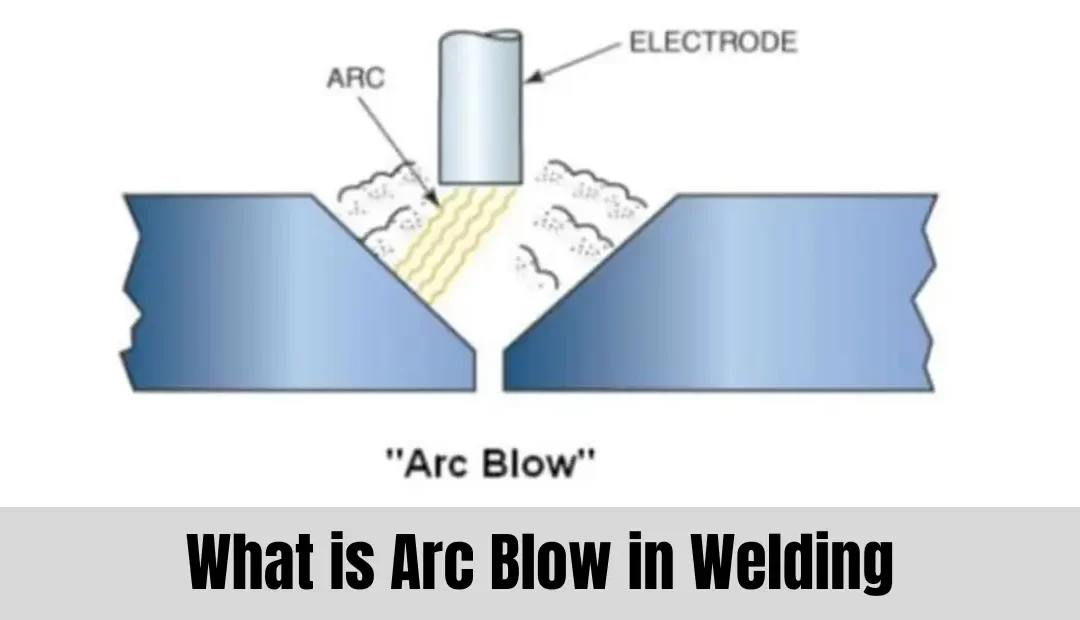Table of Contents
What is Arc Blow?
Arc blow is a phenomenon that occurs when an electric arc is used to weld metal parts together. It is caused by a magnetic field that is created around the welding arc. This magnetic field can cause the arc to be deflected and move in an unpredictable manner, making it difficult to control and resulting in poor-quality welds.
Arc blow is most commonly caused by a current imbalance between the two welding electrodes. This can occur when the welding electrodes are not properly aligned or when the welding machine is not set up correctly. The imbalance can also be caused by a number of other factors, such as the type of metal being welded, the thickness of the metal, and the position of the welding electrodes.
Symptoms of Arc Blow
Arc blow can be difficult to detect, but there are a few symptoms that can indicate that it is occurring. These include:
- A loud, humming or buzzing noise coming from the welding area
- A visible fluctuation in the welding arc
- A “wandering” arc that moves in an unpredictable manner
- Poor-quality welds that are uneven, porous, or have a rippled appearance
Read More: How to Prevent Welding Rod Sticking
What are the Types of Arc Blow Welding
Arc blow welding is a phenomenon that occurs during welding when the arc is deflected from its intended path, causing the weld to be of poor quality. There are several types of arc blow welding, including:
- Direct Current Arc Blow (DCAB): Direct Current Arc Blow occurs when using direct current (DC) welding power sources. The arc is deflected due to the presence of a magnetic field caused by the current flowing through the welding cable and workpiece.
- Alternating Current Arc Blow (ACAB): Alternating Current Arc Blow occurs when using alternating current (AC) welding power sources. The arc is deflected due to the changing direction of the current, which causes the magnetic field to fluctuate and push the arc in different directions.
- Low-Frequency Arc Blow (LFAB): Low-Frequency Arc Blow occurs when using low-frequency welding power sources. The arc is deflected due to the low-frequency oscillations of the current, which create a fluctuating magnetic field that pushes the arc in different directions.
- High-Frequency Arc Blow (HFAB): High-Frequency Arc Blow occurs when using high-frequency welding power sources. The arc is deflected due to the high-frequency oscillations of the current, which create a rapidly fluctuating magnetic field that pushes the arc in different directions.
- Electrode Negative Arc Blow (ENAB): Electrode Negative Arc Blow occurs when the electrode is connected to the negative terminal of the welding power source. The arc is deflected due to the magnetic field created by the current flowing through the electrode and workpiece.
- Electrode Positive Arc Blow (EPAB): Electrode Positive Arc Blow of arc blow occurs when the electrode is connected to the positive terminal of the welding power source. The arc is deflected due to the magnetic field created by the current flowing through the electrode and workpiece.
Arc blow welding can be prevented by using techniques such as adjusting the current and polarity, using a different type of welding power source, or by using a magnetic field correction device.
Read More: How Hot is an Arc Welder
Prevention and Correction
Preventing arc blow requires proper preparation and set up of the welding equipment and understanding the specific welding process and the metal being welded. Some of the ways that arc blow can be prevented include:
- Properly aligning the welding electrodes
- Using the correct welding machine settings
- Welding in the correct position
- Using the correct type of welding electrode
If an arc blow does occur, there are a few steps that can be taken to correct the problem. These include:
- Adjusting the welding machine settings
- Repositioning the welding electrodes
- Changing the type of welding electrode being used
- Changing the position of the welding electrodes
Conclusion
Arc blow is a common phenomenon that can occur when welding metal parts together. It is caused by a magnetic field that is created around the welding arc, which can cause the arc to move in an unpredictable manner, making it difficult to control and resulting in poor-quality welds. Arc blow can be prevented by proper preparation and set up of the welding equipment and understanding the specific welding process and the metal being welded.
If an arc blow does occur, there are steps that can be taken to correct the problem. By understanding the causes and symptoms of arc blow, welders can take steps to prevent it and ensure that their welds are of the highest quality.
Read More: What is a Flashback in Welding

James is a welding expert, accomplished author, and trusted guide with over 8 years of experience in the industry. With his in-depth knowledge and engaging writing style, James has become a true authority in the field, offering readers and clients invaluable expertise and insights to take their welding skills to new heights.

